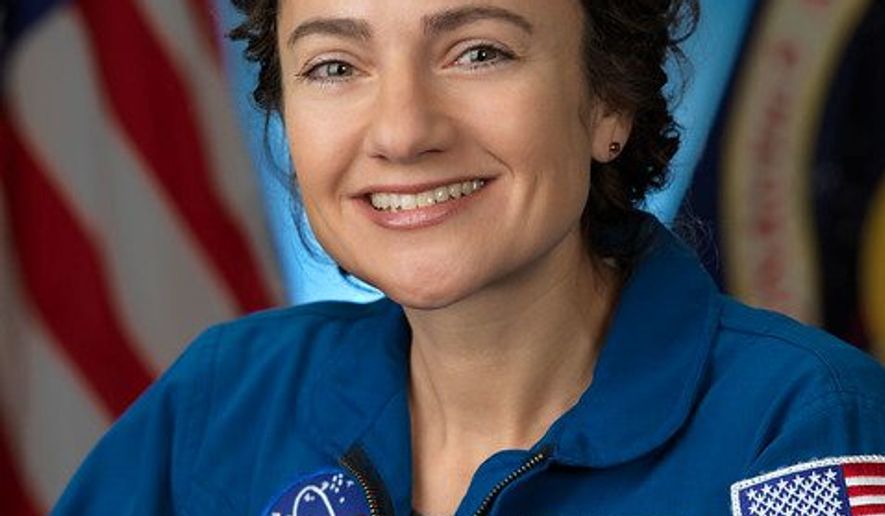Jessica Meir dreamed of being an astronaut when she was 5 years old — now she’s going to space for the first time and hopes to walk on the moon in 2024.
Ms. Meir, 42, follows in the footsteps of many women before her in NASA, from the sole woman in the control room during the Apollo 11 mission to Sally Ride, the first American woman in space in 1983.
“Growing up in the ’80s, the nice thing about that is there were female astronauts on those missions, so I saw women, I saw men, I saw people from different backgrounds,” Ms. Meir said.
Ms. Meir joined NASA’s astronauts in 2013, after having applied for a position at the space-exploring agency for years. Unlike many astronauts who have degrees related to engineering, Ms. Meir has focused on biology, which she is very passionate about, she said.
She, a Russian cosmonaut and an astronaut from the United Arab Emirates are set to launch to the International Space Station on Sept. 25. There, she will perform several spacewalks and study dark matter.
“We really are proof that dreams can come true,” Ms. Meir said. “Probably all three of us never thought it would happen to any of us.”
NASA has sent 51 astronauts to the International Space Station since 2000, and 27 of those crew members were women, including the first female commander of the space station, Peggy Whitson, who retired last year after 22 years at NASA.
Ms. Whitson, 59, applied 10 times to be an astronaut before being selected in 1996. She became the first female space station commander in 2007, and she holds the record for the most total days spent in space by a NASA astronaut at more than 534 days.
Growing up, Ms. Whitson was inspired by the Apollo missions to the moon when she was 9 years old. She knew she wanted to be an astronaut, but her dream didn’t seem like a reality until 1978, when Ride became NASA’s first female astronaut.
“That was what, to me, changed my dream into a goal, rather than something I thought was cool,” Ms. Whitson said.
NASA plans to return to the moon by 2024 with the Artemis Program, and one goal is to bring women this time.
“This is that culture shift,” said Marshall Smith, NASA’s director of human lunar exploration. “This will make a very big impact on women, particularly younger women.”
Ms. Meir, along with 11 other active female astronauts, is eligible to be on the first trip back to the moon.
“I’d love to be that woman,” Ms. Meir said. “We’re very used to working on the space station, which is only 250 miles above us, and then when we talk about the moon it’s 250,000 miles I believe that jump is necessary before we go even further.”
However, Ms. Whitson said NASA touting the first woman on the moon can be misunderstood as, “Oh, we have to put one there, they didn’t earn it like the men did,” she said.
“I do think it’s important, just like me becoming the first female commander when I was qualified,” Ms. Whitson said. “I’m sure there will be a qualified woman who will do a phenomenal job, but I don’t like how it’s presented in the sense that it sounds like a stunt.”
For Ms. Meir, she hopes to inspire all young people who want to be astronauts, not just young girls.
“I hope kids growing up looking at us, they see women, they see men, they see a diverse workforce,” Ms. Meir said. “That just becomes normal for them, and nobody has to feel that they are singled-out or there’s something they can’t do just based on who they are.”
Both Ms. Whitson and Ms. Meir said young people who wish to work for NASA someday need to find a passion and stick to it, even during failure.
“I tried to be an astronaut many times before I was successful,” Ms. Meir said. “The most important thing is to stick with it, to not be afraid to fail and to be willing to take a risk. And I really do believe that without risk, there is no reward.”




Please read our comment policy before commenting.